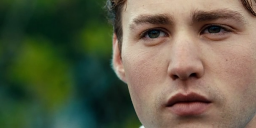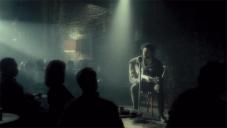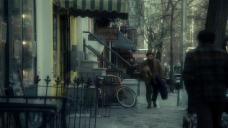
-
@Mistas something "odd" came out that LUT, is Melara's? I compared it with the one I posted in @maddog15 's GH3 Best Video Settings thread, checked it also in AE with different bit depths. At 8 bits gave same lines, with 16 and 32bpc was not noticeable, worked best with 422. In photoshop was like that despite any colour depth; it's like it had the shadows pushed too hard. So to be in the safe side, I'll venture to say IF to be used in AE, only in 16 or 32bpc, do not use it in photoshop, davinci dunno, probably is where would work best

-
@cyzercraft I'm buying it! Great job in my opinion. It fixes that "digital color cast" I sometimes find annoying with my GH2 and adds some good vibrancy. Seriously, let me know and I'll be glad to purchase. My only concern is that it could "fuzz" when applied to low light footage, just like some extreme secondary color correction effect. If you have more low light footage samples that would be great. Are they are made only for GH2 or do they come in "GH3 flavor" also?
-
@rNeil Here's a video2log LUT for download: http://juanmelara.com.au/downloads/video2log_lut.zip
Conversion to LOG just expands the color space for grading, some LUTs only work on LOG footage. As with anything, YMMV
-
Looked around for rec709->log LUT's ... didn't find any, really. Did find a number of comments in various cine sites strongly suggesting NOT converting to log just to have to convert back to rec709 for delivery ... different strokes for different folks, I guess ...
Neil
-
LOG grades differently from rec709. Osiris also comes with a rec709 to LOG conversion LUT. To my eyes, a direct rec709 film LUT seems more intense than the same LUT designed for LOG which is applied downstream from a rec709 to LOG conversion.
Osiris LUTs do a lot with skin tones, they also change the DR and create a smoother highlight roll off which is another characteristic of film.
These are just starting points of course, for further grading.
-
Some of those are pretty "iffy" but there were some nice, interesting looks in there.
-
Here's some more test ;))
-
@JuMo yes, I was rather shocked using it on some Driftwood Moon Trial 3 footage some months back. In the standalone it just tore the skies up, introducing weird discoloration. The same footage, in After Effects using a linear-float, color managed project, looked good and had no such problems. The skies didn't look like a bad DVE effect anymore.
-
Well, there likely isn't anything being done in the Film Convert plugin that you couldn't do in an AE pre-comp. Same goes for Magic Bullet, in fact, I know MB was all prototyped in AE as some very complex composites, including all the now more-or-less defunct operations that cleaned up DV colorspace artifacts, did the 60i to 24P conversion, etc. Once you get the process and formula down, however, deployment becomes much more practical if you can reduce all that you did to streamlined code as a plug-in.
AE isn't very efficient, after all. Quite a few steps might include an AE operator where only one of a dozen controls is modified from its default, but the whole thing had to be loaded and processed. This is how the AE version of Shian Storm's ColorGHear functions. I use it a lot but I bet his Davinci version is a lot faster and more efficient doing the same exact things.
What Film Convert also did was separate the objective from the subjective as much as they could. You can't really make something that "emulates film" when you use finished film as a reference. That's a conflation of the inherent qualities of the film stock, possibly one or more film-to-film optical processes, color timing and grading and the perceptual differences inherent in each type of exhibition.
Removing all of the playback variables, you still are likely trying to come up with a formula that is tainted by the colorist and DP. For instance, above I mentioned Kodak 500T (Vision3), a really popular stock with lingering film production. Take a look a The Place Beyond the Pines, The World's End from earlier in the year along with the recent The Secret Life of Walter Mitty and the new Coen Bros film Inside Llewyn Davis. They all used the 500T stock. Hell, just compare any of the others to the Coen Bros film, or just compare that to The Place Beyond the Pines.
Where does the look of the Kodak stock (not to mention their different lens packages) end because I only see the work of the colorists + DP and they all look entirely different. You just can't build a meaningful "look" even for a single film stock based on observing the end results. You can emulate specific movies, however, hence Magic Bullet Looks and DaVinci Power Grades.
That's why the Film Convert folks based their conversion on controlled photography of known color and value scales, calculating the delta between results from target film stocks and popular camera + profile combinations. After that the look is up to you.
edit: Examples

 Ben-Mendelsohn-and-Ryan-G-025.jpg640 x 360 - 83K
Ben-Mendelsohn-and-Ryan-G-025.jpg640 x 360 - 83K
 PHPQEKgpDkz5TR_1_m.jpg450 x 300 - 37K
PHPQEKgpDkz5TR_1_m.jpg450 x 300 - 37K
 the-place-beyond-the-pines-252.jpg1389 x 579 - 110K
the-place-beyond-the-pines-252.jpg1389 x 579 - 110K
 the-place-beyond-the-pines-1024.jpg1024 x 576 - 470K
the-place-beyond-the-pines-1024.jpg1024 x 576 - 470K
 tptpttpp.png720 x 304 - 268K
tptpttpp.png720 x 304 - 268K
 16764841001_2710211240001_inside-llewyn-davis-carey-mulligan.jpg656 x 354 - 149K
16764841001_2710211240001_inside-llewyn-davis-carey-mulligan.jpg656 x 354 - 149K
 DKR-30304r.jpg570 x 381 - 77K
DKR-30304r.jpg570 x 381 - 77K
 Inside-Llewyn-Davis.jpg600 x 300 - 43K
Inside-Llewyn-Davis.jpg600 x 300 - 43K
 InsideLlewynDavis_gaslightcafe_620.jpg620 x 350 - 17K
InsideLlewynDavis_gaslightcafe_620.jpg620 x 350 - 17K
 Localrevibe-InsideLlewynDavis994-636.jpg1248 x 702 - 87K
Localrevibe-InsideLlewynDavis994-636.jpg1248 x 702 - 87K
 Oscar-Isaac-in-a-still-fr-008.jpg460 x 276 - 24K
Oscar-Isaac-in-a-still-fr-008.jpg460 x 276 - 24K -
@BurnetRhoades Yes, the skies is where i noticed I was losing information in the standalone. I'm excited to give it a shot as a plugin to see the differences. @cyzercraft Full Resolve may be too expensive for hobbyists, but you could always try Resolve lite, it is free
-
Thanks guys, I will try those osiris LUTs, also will do some more research. You see my main target is to make it all possible for amateur users who cant purchase resolve or doesnt know how to use luts or whatever stops them from using those PRO grading techniques. I try to make it all possible inside AE without external plugins - simply using ffx file. Sure I know its much different and not as versatile as filmconvert, and it's great! I am not trying to invent another bicycle I want to give people a possible way to make footage look cool without shooting it as flat as possible and without knowing how to use resolve or anyother external coloring engine.
-
Also, If you're using it in a floating point workflow there's nothing destructive. Destruction would realistically only be an issue if you were mapping from high to low, not from low to high, in terms of fidelity and gamut. This transformation could highlight relative limitations in the source material in the process but that's not really destruction and you can work to de-emphasize these artifacts when/if they present themselves (grain helps, though their defaults are generally too strong and too large).
The folks at Film Convert are trying to present their standalone as a viable alternative to doing your total grade but after some experimentation I've found you get much better results from their software when used as a plug-in within a full float environment. Skies show a marked difference in quality. The standalone, to me, is only useful at quickly previewing different looks and not much more.
-
That's a good point Burnet and an interesting workflow, I haven't spent too much time evaluating any destructive nature of filmconvert, but one of the reasons I prefer to use film emulation LUTs in Resolve on a node close to the end is I can mitigate some of the image destruction from the filmstock emulation on nodes before it. Applying Filmconvert first, then grading from there doesn't really give me that option, though, as I said, I haven't evaluated FCs destructive nature, so maybe it's a moot point.
edit: I didn't realize you could use FilmConvert INSIDE Resolve, I thought it was just standalone or Adobe plugin (which has been my experience with it). Being able to use it inside Resolve changes my perspective on it for sure.
-
Film Convert isn't a replacement for grading. You can line up ten films shot on Kodak 500T and see ten completely different looks.
Getting digital imagery in the realm of looking like it originated on film could be the end game, going for a "one light" look but there's nothing at all precluding you from running a Film Convert pass and then crafting the imagery from there in Resolve and any and all grading techniques there are.
After all, modern DI techniques were first used on scanned film. What Film Convert does is take the subjective guesswork out of where most of your effort will be spent, letting you instead focus on your creative grade. It's not an either-or.
-
Not a bad start, it's definitely got something going for it, but I feel the yellow and amber tones are not very pleasing to my eye.
Other options include the Osiris LUTs, which come in log and rec709 flavours (rec709 being the ones you'd use with DSLR footage). Also, Juan Malera has some nice Kodak print film stock emulation LUTs too, and they are free. You might want to give them a shot.
http://juanmelara.com.au/print-film-emulation-luts-for-download/
Really though, getting as close as possible to the look of film is more than just a plugin or LUT, I recommend spending a little time in Resolve working on some power looks built off of a LUT to get the best results.
Some people swear by FilmConvert, it IS good, but personally, I prefer a little more control, so I like Resolve and some LUT options to build from.
-
I really hope the people who respond to this thread do so without being jerks about it. If you want people to join and "stay" as a part of this community then try to keep it civil.
BTW @cyzercraft @BurnetRhodes does have a point with Film Convert. It's basically doing the same thing (and more) than what it seems your idea is. IMO if you can match what that does then the real big difference would be price. I admit though...I have not tried either.
-
Film Convert (http://www.filmconvert.com/)
Done.
Howdy, Stranger!
It looks like you're new here. If you want to get involved, click one of these buttons!
Categories
- Topics List23,993
- Blog5,725
- General and News1,354
- Hacks and Patches1,153
- ↳ Top Settings33
- ↳ Beginners256
- ↳ Archives402
- ↳ Hacks News and Development56
- Cameras2,368
- ↳ Panasonic995
- ↳ Canon118
- ↳ Sony156
- ↳ Nikon96
- ↳ Pentax and Samsung70
- ↳ Olympus and Fujifilm102
- ↳ Compacts and Camcorders300
- ↳ Smartphones for video97
- ↳ Pro Video Cameras191
- ↳ BlackMagic and other raw cameras116
- Skill1,960
- ↳ Business and distribution66
- ↳ Preparation, scripts and legal38
- ↳ Art149
- ↳ Import, Convert, Exporting291
- ↳ Editors191
- ↳ Effects and stunts115
- ↳ Color grading197
- ↳ Sound and Music280
- ↳ Lighting96
- ↳ Software and storage tips266
- Gear5,420
- ↳ Filters, Adapters, Matte boxes344
- ↳ Lenses1,582
- ↳ Follow focus and gears93
- ↳ Sound499
- ↳ Lighting gear314
- ↳ Camera movement230
- ↳ Gimbals and copters302
- ↳ Rigs and related stuff273
- ↳ Power solutions83
- ↳ Monitors and viewfinders340
- ↳ Tripods and fluid heads139
- ↳ Storage286
- ↳ Computers and studio gear560
- ↳ VR and 3D248
- Showcase1,859
- Marketplace2,834
- Offtopic1,320









